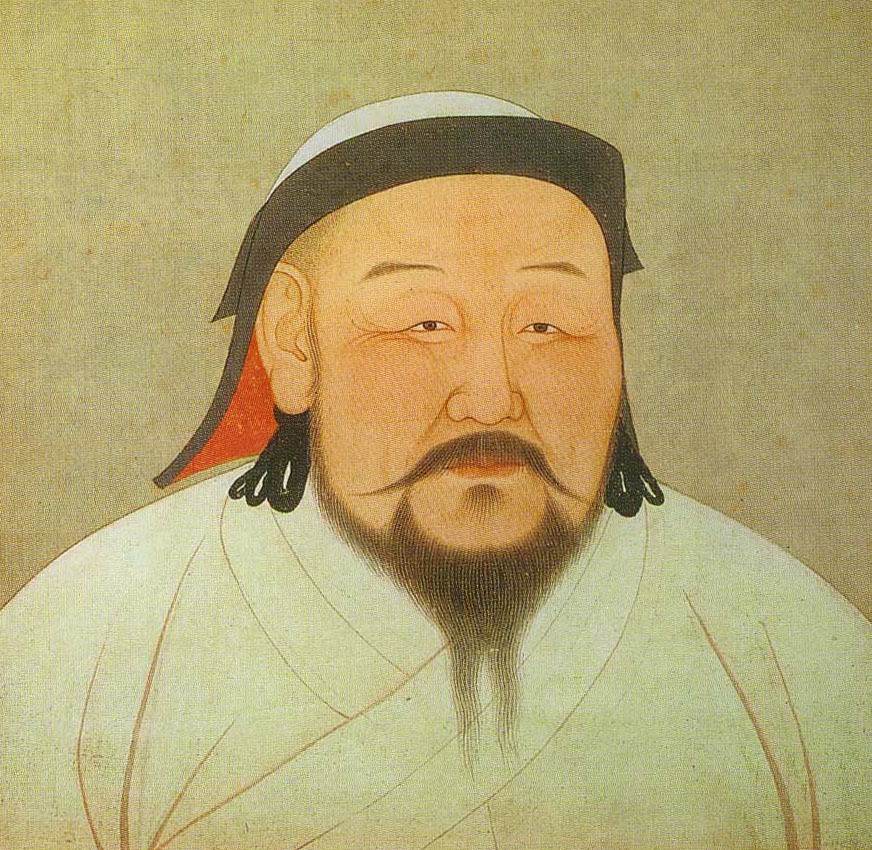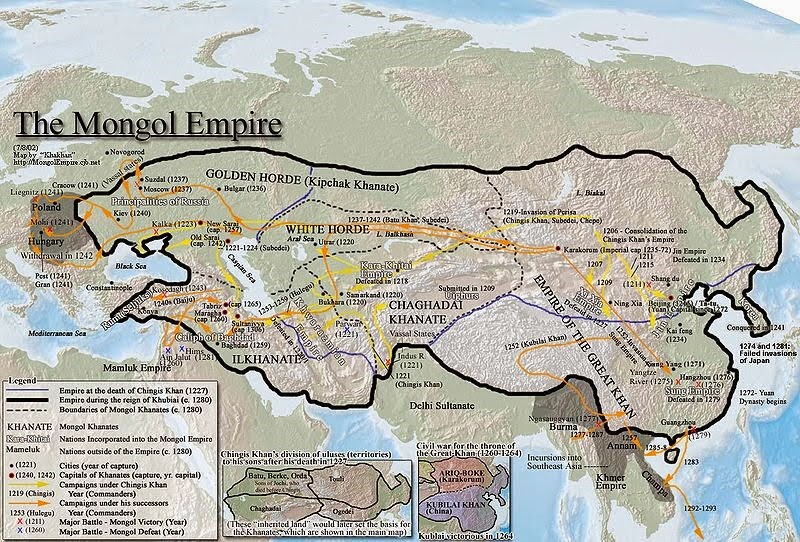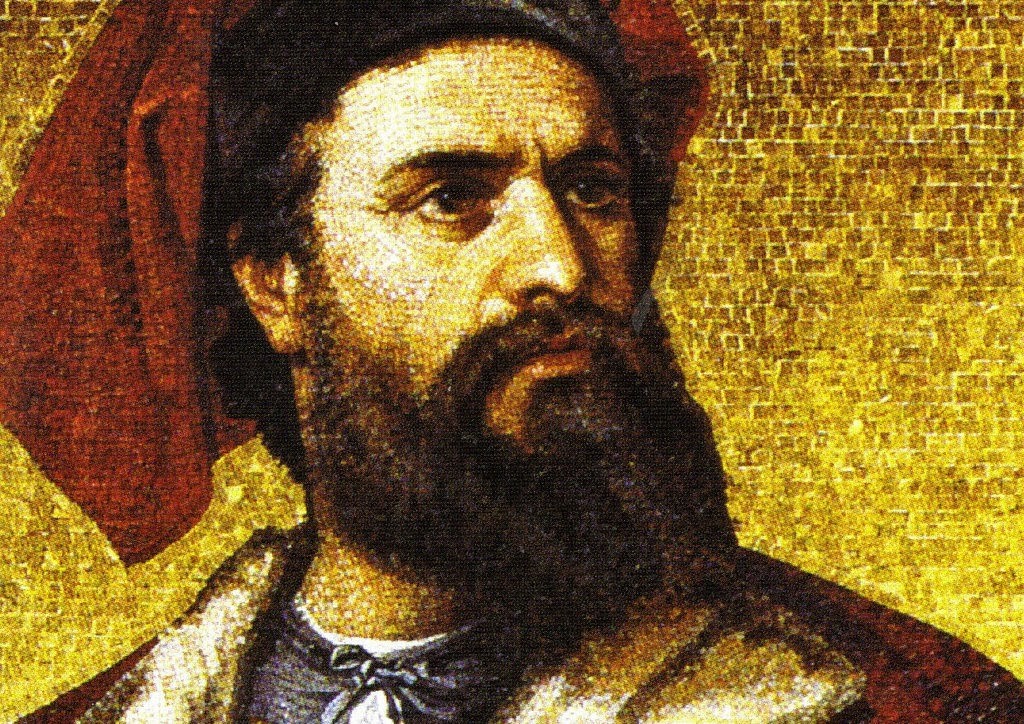Today in History - Great Mongolian Ruler is Born
September 23, 2014

Posted by Diana Stanley, Museum Volunteer and Customer Service Representative
The Mongol Empire was the second largest empire in history. It spanned over 12.5 million square miles at its height or approximately 22% of the world’s entire land area. That size is twice the area of modern day Russia. It united a landscape that today comprises parts of 32 countries. One of greatest rulers of the Mongols was Kublai Khan.
|
|
|
Size of the Mongol Empire |
He was born September 23, 1215. Kublai Khan came from a family so large that it's said statistically one in every two hundred men are related to his grandfather Genghis Khan. The idea of primogeniture, or the largest share of inheritance going to the eldest son, did not catch on in Mongolian culture. To make things worse, the "Great Khan" was obliged to have a large harem. The practical implication of having so many heirs with equal claim to the throne was that when the head of the family died, the throne became a free for all. The easiest way to take control was to prove oneself to the Golden Horde, preferably with bloody conquests.
|
|
|
Kublai Khan |
Kublai’s father was part of the Tolei faction, which prevailed in securing the throne. He did have three older brothers, including the capable Möngke who became the Great Khan, or ruler of the empire. As a young man Kublai was given control of Hebei, an area that is now a province of upper China. Later in life he decided to conquer China and succeeded. He was the first foreigner ever to do so. Around this same time, Kublai fought with his younger brother Ariq Böke in an event called the Toluid Civil War. Kublai won, and over time the empire became more and more fractured.
Kublai is admired for his accomplishments in both Mongolia and China. He was for the most part religiously tolerant and was himself a Buddhist. He sponsored several Muslim scholars at his court who achieved significant advances in astronomy, map making, and siege warfare. He also rebuilt the Grand Canal of China and instituted the first fiat money, meaning currency that is worth what the government says it is because they say so.
Chinese merchants traded all over the Mongol Empire, from Russia to Mesopotamia. One trader in China traveled a long ways to get there: Marco Polo, an Italian merchant who flourished at Kublai’s Chinese court. Polo’s book on his travels marveled at the wealth displayed at Kublai’s court. He called the summer palace the “greatest palace that ever was.”
|
|
|
Marco Polo, the first European to travel to Asia and tell his story. |
Kublai continued to conquer new territories such as Korea and Myanmar. In spite of all Kublai’s accomplishments, one of the few things people remember about him is his failure to conquer Japan. Kublai sent two fleets to conquer the island but storms destroyed both efforts. The failure inspired the Japanese idea of kamikaze or “divine wind” that Japanese propagandists used during World War II.
Want to learn more about this time in history? Visit the Museum of World Treasures. Learn more on our website or call 316.263.1311.


